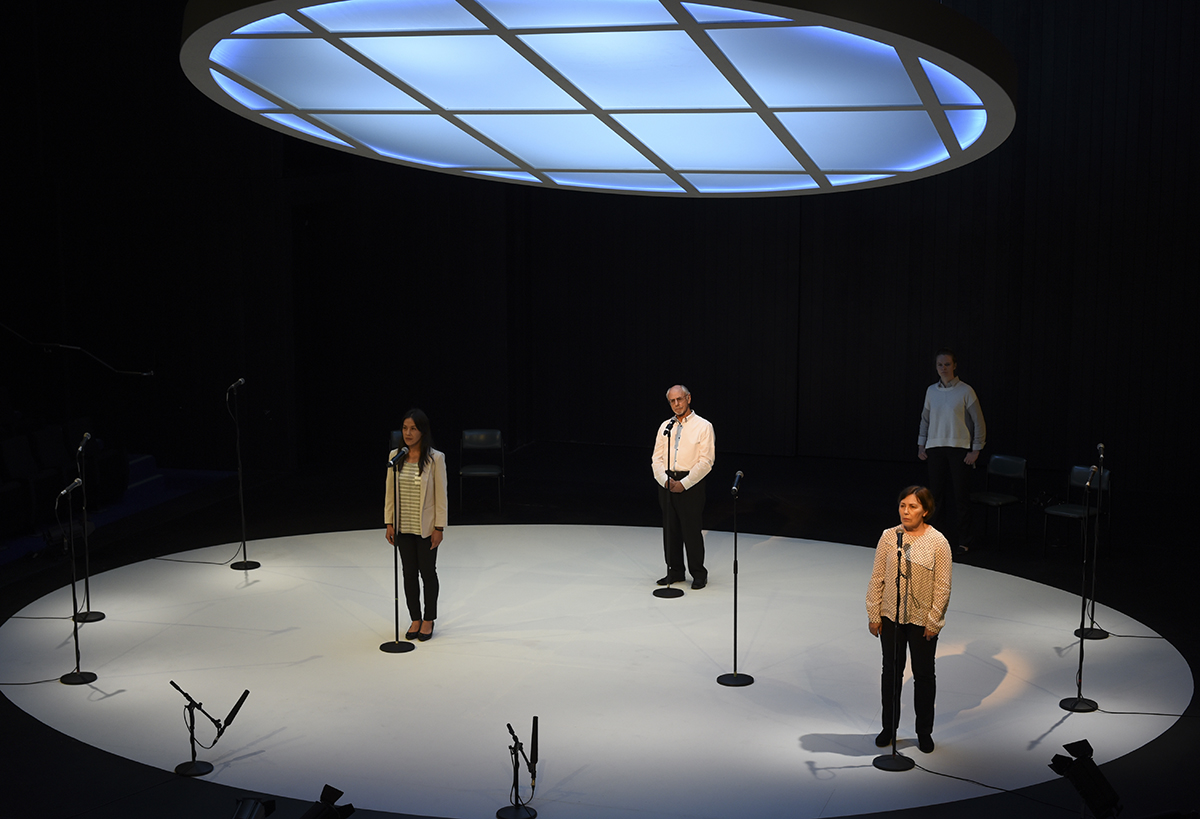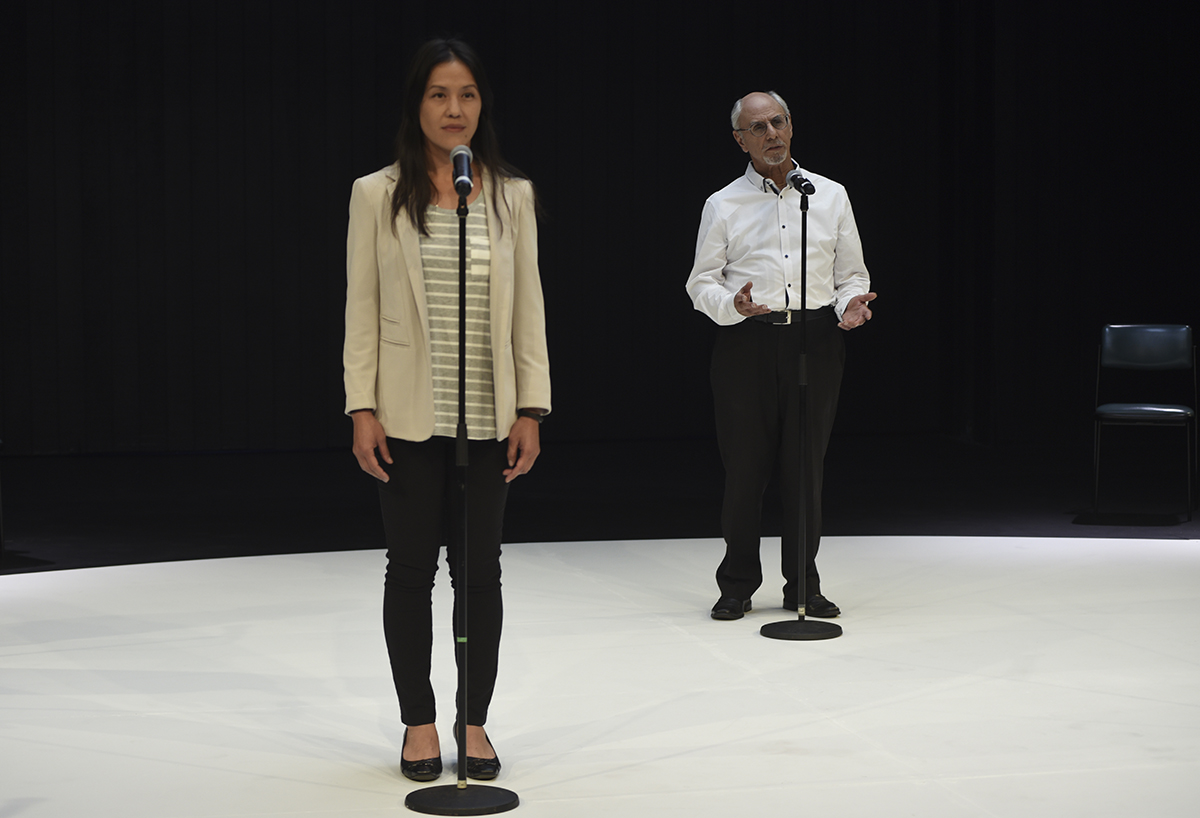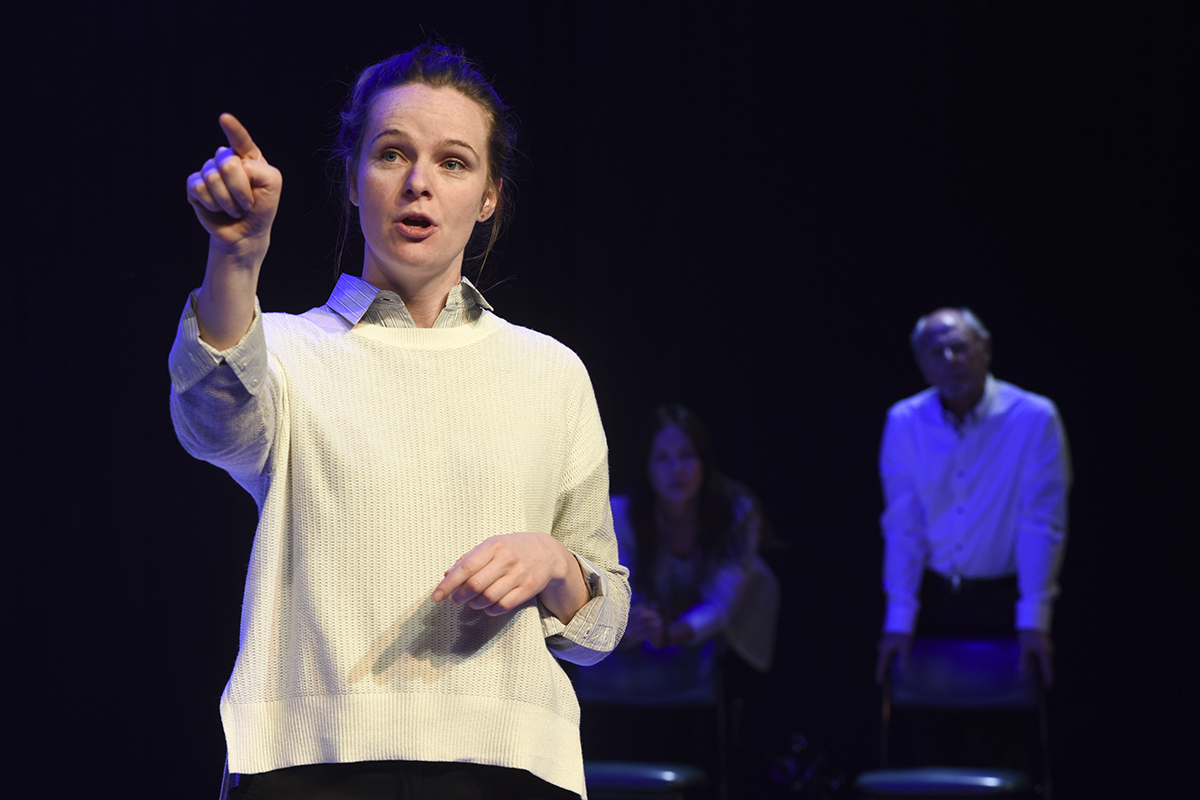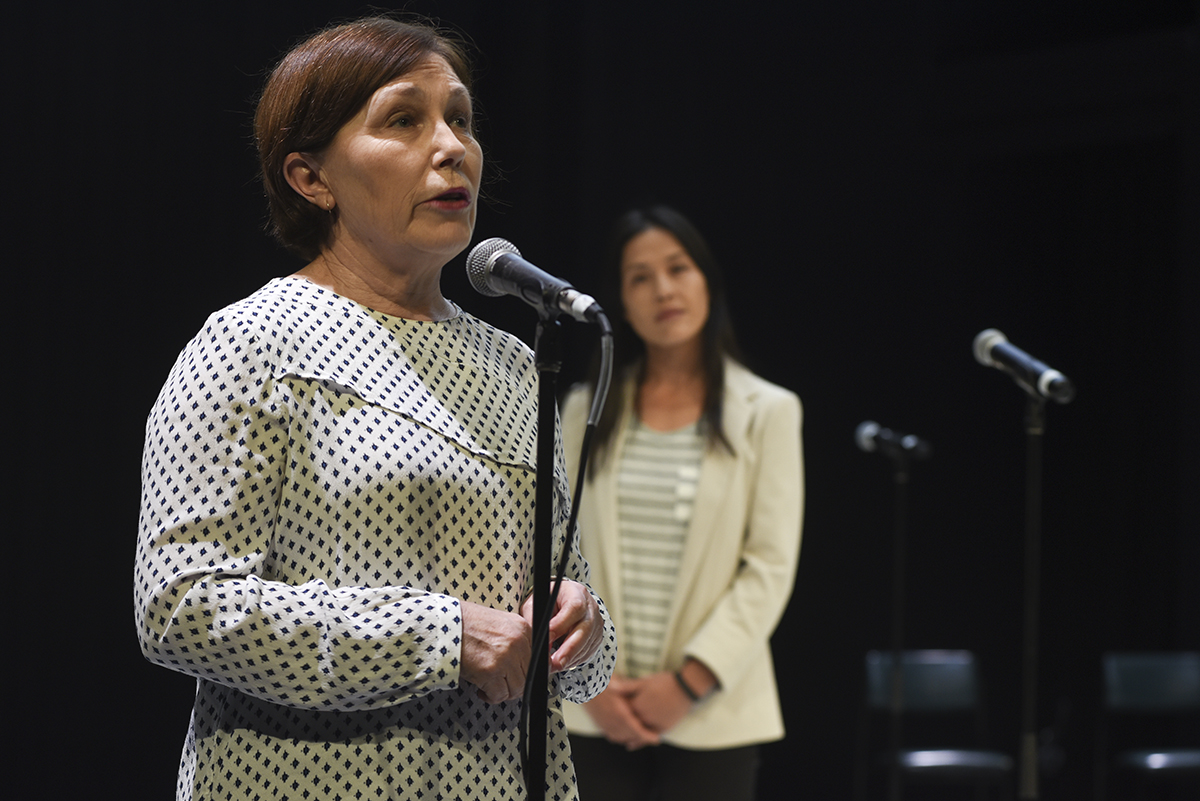
Grace Under Pressure: a call for mutual caring
When we’re ill, worrying about the wellbeing of our doctors and nurses is far from our thoughts, unless we sense in them signs of anxiety and exhaustion which, in turn, exacerbate our own stress. Grace Under Pressure, a verbatim theatre work by David Williams and Paul Dwyer, and directed by Williams, incisively probes the experiences and attitudes of nurses and doctors working in hospitals, essentially 19th century institutions which persist unchanged in some fundamental ways into the 21st with class- and role-bound hierarchies, complex bureaucracies, eternally long surgery waiting lists and punishing working hours. We hear about these matters regularly in the media, along with occasional reports on bullying and suicides. As one of the workers quoted in Grace Under Pressure says, “It’s not as if the public doesn’t know.” But news bites are not knowledge, let alone tools with which to understand and come to the aid of beleaguered hospital staff, adding to an increasing sense of our public powerlessness in the face of inflexible institutions and reform-averse governments. Grace Under Pressure is a corrective, drawing directly on the lives of healthcarers and directed and performed with a sense of intimacy, immediacy and urgency.
The striking set comprises a circular, bright white floor populated with black microphones and stands over which hovers a large white disk. The outer area is emphatically black in contrast with the vivid performance space, underlining the binary tensions that emerge when the four performers seated at the rear periphery enter to deliver the words of ambulance staff, nurses, interns, doctors, surgeons and consutants drawn from extensive interviews for this project. The stylishness of the design recalls new and upgraded hospitals with their sleek facades and reception areas and artworks exuding a sense of wellbeing. But not all is well within. The suspended disk also chillingly evokes a large light suspended over a surgeon, nurses and patient in a white operating theatre. As Grace Under Pressure unfolds, the light on the disk is systematically infused with a variety of colours and shapes reflecting the growing complexity and emotional tension embodied in the utterances delivered by the performers. The set also doubles as a media space, the performers weaving to and from microphones as if speaking publicly for radio or TV, or even a government enquiry, and with minimum need to project, so that intimate engagement with the audience is sustained. The accompanying music, heard cinematically behind the dialogue, quietly doubles as ambient hospital foyer music and a provider of subtly varied emotional subtext, soothing, then quietly haunting and becoming expressively emphatic in the work’s final painful moments.

Renee Lim, Sal Sharah, Grace Under Pressure, photo Heidrun Löhr
Williams and Dwyer have structured their expert cut-and-paste of the recorded interviews to move broadly from short utterances, recollections and observations to longer anecdotes, exchanges between speakers, intensely private revelations about suicidal impulses and finishing with a conversation about the final moments of life. The first words come from nurses, then a variety of interns, doctors and surgeons, whether in large hospitals or a small, under-resourced rural one, but in a cumulative weave so that there’s always a sense of many voices and roles, intricately but often problematically connected.
The tales of insult, humiliation and abuse, of overwork, compromise and failure are cumulatively challenging, but full of idiosyncracies which make the four performers distinctively personable even though each never plays a sole character throughout. Captured speech rhythms, hesitations, interruptions and cadences abet differences in attitude from amused to resigned to cynical and despairing. Williams and Dwyer have good ears for specifics that will fascinate us as well as speak to workplace challenges — a nurse who sees herself as a sociologist; another who does ambulance duty on her hospital days off; the first experience of laying out a body; knowing when to declare a person dead and having the authority to do it when a doctor is slow off the mark; and an experienced nurse who speaks to the dead. A soft pink suffuses the rim of the overhead disk and the rippling organ-like music now lingers with sustained notes and light phasings. Death is no longer a horror, but a young nurse is advised that it’s a good idea “to check your own pulse.” Once again, there’s been no time for dinner.
The light now blue, the music lightly warbling, the words from an older nurse firmly assert that she’s there to help her patients, not the doctors whom she sees as always confused about the role of nurses, who often save them from terrible errors. A female intern refuses to join the orthopoedic surgeons’ rugby and booze club. The blue intensifies: an intern learns not to address consultants, not to burst into tears. A senior nurse has finally had enough and “doesn’t give a shit.” An older male nurse is wrongly castigated by a doctor, apologised to not by the offender, but by that doctor’s senior and not in front of the shocked patient and other staff. Someone asks, “Was anyone ever praised?” Staff complaints when made singly or collectively about bullying are ignored. Long notes exude melancholy. Working hours are astonishing: 80 to 120 per week. The rationale, “We pay you for 55, you do 100 because you’re young and lazy.” Suicidal thoughts loom.

Rose Maher, Grace Under Pressure, photo Heidrun Löhr
What grace remains is now lessening under severe pressure. Beneath an eerie greenish hue, the tale is told of a surgeon who is an hour late for an operation and becomes furiously abusive in front of patient and staff when he finds an associate, a friend, has taken over. They later restore the friendship, but the speaker admits “no-one defends the abused” because the offending doctor, who behaved “like a psychopath,” is regarded as “the greatest surgeon who ever lived.”
The light in the disk mingles darkening colours as authority in the hospital is revealed to be absolute and the emotions constellating around it fraught. A nurse tells of a surgeon quizzing her at “so low a level and so constant” about her sex life over a long operation and his laughing it off as “just joking.” She says of him, “He’s not a great person, just good at his job.” A moon-like cusp forms on the curve of the disk and doctors talk with grim humour of repeated driving accidents, one caused by tiredness from performing an all-night organ transplant. The sheer enormity of the risk taken is breathtaking. Why is it then that “in no other industry are these hours allowed?” This is the knowledge we have, but is never acted on and, says one speaker, is held in check within the system by an “audit culture” and the need to keep the Minister of Health happy.
This hospital world grows nightmarish beneath the disk, hued an ominous orange. Having dealt with a family of car crash victims without sufficient assistance, food or sleep, a traumatised young doctor in a regional hospital registers a complaint. Subsequently appearing before an employment panel she is identified as “that whinger” and decides to leave the profession. Those who don’t can be prone to suicide. The disk becomes an intense blue halo, the music a deep slow pulse and a corridor of white light cleaves the floor. A young doctor on the edge of suicide steps along it and out beyond the frame, to kneel among us, beyond understanding that she could have found help within a system that clearly didn’t vigorously proffer it.

Wendy Strehlow, Renee Lim, Grace Under Pressure, photo Heidrun Löhr
It’s asked, “Are there any good stories?” There are, of course; for example the strange things that can go on in a maternity ward under a full moon. Another, in the work’s final scene, turns to the relationship between patient and healthcarer in the face of death. Can the final minutes or hours of life be made less painful and how is this decided and performed ethically? We hear talk of the slow morphine drip and the agonal breathing (irregular and sometimes with unusual vocal sounds) that might signify imminent death; we hear it in the deep, grinding, slow, sometimes fluctuating pulse of the music. We hear the relatives ask if they can wash the body. Yes, they can, beneath a benign blue halo.
Grace Under Pressure is greeted with passionate enthusiasm by its audience who have been amused, informed and moved. It is a work with a clear sense of social purpose, complexly enriched with the observations of those who are responsible for us in hospitals and whose own lives are subject to often inordinate pressures. We need to care for them.
Isabel Hudson’s set design, Richard Manner’s lighting and Gail Priest’s music serve David Williams and Paul Dwyer’s script and Williams’ direction admirably in a finely integrated production, performed with conviction and conversational ease by Sal Sharah and Wendy Strehlow, who bring great gravitas to their roles as senior hospital staff, and Renee Lim and Rose Maher, who convey the youthful potential of those who should never be driven to contemplate suicide. Grace Under Pressure should be seen widely, so that what is often just news becomes knowledge, becomes action.
–
Seymour Centre & The Big Anxiety — Festival of Arts+Science+People: Grace Under Pressure, writers David Williams, Paul Dwyer, with Sydney Arts & Health Collective, director David Williams, performers Renee Lim, Rose Maher, Sal Sharah, Wendy Strehlow, dramaturg Paul Dwyer, lighting designer Richard Manner, sound designer Gail Priest, set and costume designer Isabel Hudson; Seymour Centre, Sydney, 25-28 Oct
Top image credit: Cast, Grace Under Pressure, photo Heidrun Löhr






